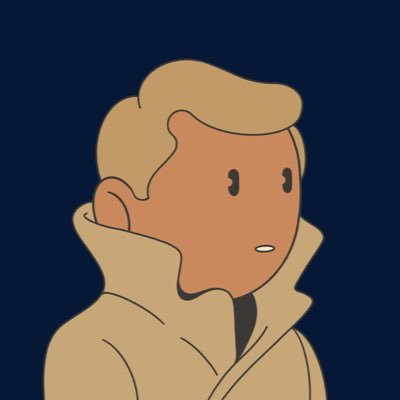About Tormius

Tormius is a digital artist based in Valencia, Spain, whose practice unfolds at the
intersection of geometric abstraction and the absurd. His work is defined by bold shapes, vivid colors, and a meticulous sense of visual clarity, compositions that explore tension, play, and meaning through structural balance.
Drawing inspiration from early avant-garde movements, Tormius has developed a distinctive visual language that blends precision with spontaneity. His aesthetic is shaped by a deep curiosity, a minimalist approach, and an ongoing desire to challenge expectations. Working across various digital formats, he crafts a space where order and absurdity coexist, inviting viewers into systems of form that feel both intentional and intuitively playful.
Tormius has built his artistic career within the Web3 ecosystem, where he is an active participant as both creator and collector. His work reflects a long-term vision, grounded in a philosophy that values curiosity, individuality, and creative freedom. For him, art is more than expression, it is a way of connecting with the world, of building a future one gesture at a time.
Each piece he creates is part of a broader journey: an exploration of rhythm, structure, and the invisible dynamics that shape how we live, move, and imagine.
An interview with Tormius led by Carlo Borloni


The title of your collection, The Art of Play, suggests a reflection that goes beyond simple games. What does “play” mean to you, and how did you try to translate that notion into abstract art?
For me the play is the essence of everything in art. When you have an empty canvas on which to start creating something, the playing with your creativity begins and it's like a dance, also like a fight until you reach the result you are looking for.


Each piece in the series is inspired by a different sport, yet there’s no depiction of bodies or literal action. How did you build a visual language that evokes movement and tension without direct representation?
I'm not good with direct representation of things. Also, like any artist I create my pieces based on what I would like to see in the world and I am interested in exploring a style that does not depend on realism but on a free abstract interpretation and a visual challenge where lines, shapes and colors take the lead role against the figurative.


Your work balances visual clarity and absurdity, geometric rigor and playful impulses. How do you maintain this tension, and what draws you to formal paradox?
Balance is important and I try to keep my pieces, although abstract, with a solid base compositionally. I like to play with contradictory concepts; chaos and order, balance and destructuring. In my process it is key to search through the abstract for a concept that works and has solidity and from there, refining that concept, return to the abstract. It's like in a song that starts with a rhythm and then changes to another to finally end the song with the first rhythm.


In a time when digital art often leans toward instant impact, you seem to cultivate an aesthetic of reduction and long-term thinking. How important is time, for your creative process and for how your work is perceived?
When I talk about the long term, I am really talking about my entire life ahead of me. Because the decision to be an artist is not a hobby, it is the identity I have chosen to have to live my life. I try to take everything in stride and this is one of those things. With patience, good work and perseverance I know I can achieve my ideal.


Your practice is also nourished by references to historical avant-gardes. Which movements or figures have most influenced you, and how have you transformed those references into a personal visual vocabulary?
During my studies in graphic design I was able to study many avant-garde movements and take inspiration from many of them. I think this is something that I try to transfer to my work little by little, starting from finding my own style to which I can add avant-garde touches. What I remember and what inspires me most is the Bauhaus movement, the architecture of Mies van der Rohe, the work of Kandinsky, Malevich, El Lissitzky... also the Dutch De Stijl movement whose artists (and in this case founders) such as Theo van Doesburg, Bart van der Leck or Mondrian inspire me a lot.


The Art of Play also seems to reflect on structure: every sport has rules, spaces, and precise gestures. Your abstract works seem to render that invisible organization. How central is the idea of “structure” in your art?
For me it is the heart of the work. Maybe because I haven't reached a level where I don't need a structure for the abstraction I show to make sense, but right now I feel I need to build a solid and recognizable base through abstraction. I always try that in my abstract work you can recognize some forms that help you to situate yourself in the work and have a guide point to start from. Although I think it is an approach very subject to change and will depend on how my style evolves in my future works. Maybe I don't need that guide point or I don't mind putting it on, haha. Making a more visceral and chaotic work. Everything is possible!


In your biography, you speak about individuality, minimalism, and freedom. How do these values manifest in the composition of your pieces and in your choice to work digitally?
The topic of choosing digital as my medium has a lot to do with minimalism in this case. Since I started I still use the same iPad I bought 5 years ago. I can travel with it and have all my pieces and keep creating wherever I am. This also applies to the tools I use, I try not to get lost with multiple programs, different textures, brushes ... This is given by my background in design and my approach to a minimalist trend where in design is very important.
There are a couple of phrases that mark my philosophy on this subject. Going back to Mies van der Rohe: “Less is more”.
Also, a principle that is used a lot in design and it is believed that its origin is in the U.S. Navy: “Keep it simple, stupid”.


Web3 has been a central space for your growth as an artist. How has this context shaped your practice, and what kind of relationship do you seek with your community of collectors and fellow artists?
Web3 has been and still is everything for me. It is the place where I was born and grew up, since I finished my studies a few months before discovering this and getting fully involved from the beginning. I have grown a lot in terms of style and how to improve as an artist and as a person. It has helped me to learn new things, connect with people I wouldn't have been able to otherwise and have friends around the world who share the same concerns as me. With the daily networking and the annual events in different cities around the world, it is key for me to always be in touch and keep growing with everyone. When you believe in what you do, believe in the technology behind it, believe in the people who handle it and have made so many friends along the way, this place feels like home.


Each piece in the series stands on its own, yet all are part of a greater whole. Is there a broader narrative connecting them, or do you see them as variations on a single theme?
Each piece is different, but under the same pattern to maintain cohesion in the collection. In each piece I take the liberty to go one way or another, in Baseball for example is a more minimalist work with the figure of the batter, while in Football is a composition that alludes to more things, the goal, the field of play, a leg kicking a ball... They all have a different creative direction but are united under a similar color palette, same textures, brushes and finishes.


If you could choose one emotion that you hope viewers feel when engaging with The Art of Play, what would it be, and why?
For me, in all my pieces, what I look for in the spectator is to awaken their curiosity, to allow them to explore the piece and give it its meaning, to find things that perhaps need a second look to realize that they are there or what they mean. I look for a conversation with yourself and try to solve a kind of visual puzzle. I look for the viewer who dares to stop and wonder what they are looking at.
Thank you so much Carlo for this wonderful interview. Let’s play!

Sign up for our newsletter to keep up with the latest news from NINFA
Sign up for our newsletter to keep up with the latest news from NINFA
Write us at: info@ninfa.io, or click here if you need support
Copyright © 2025 Ninfa Labs - 12094240962 - All rights reserved

